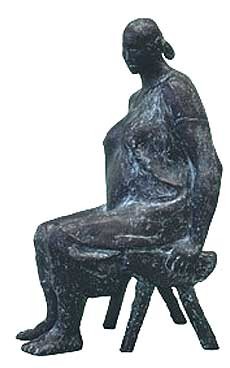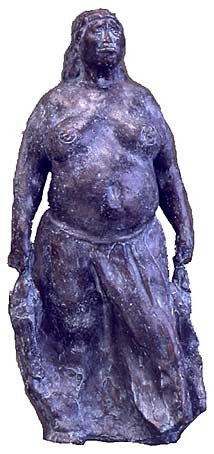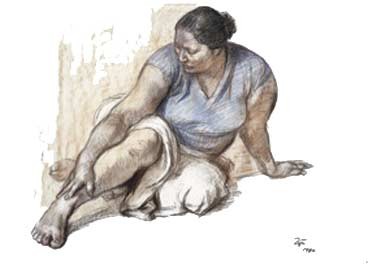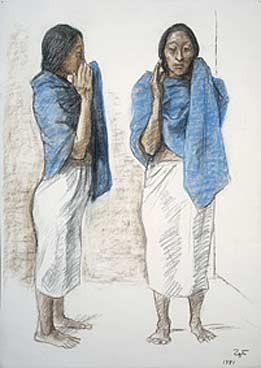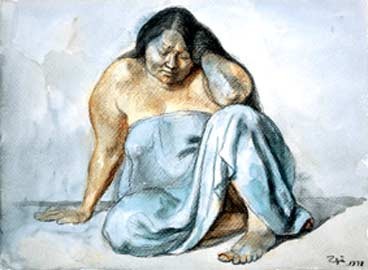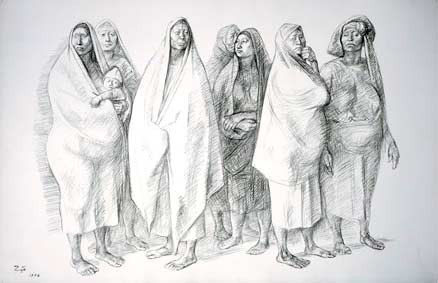|
|
Revista electrónica del Grupo de Arte de la Asociación del Personal de la OEA - Abril 2003 |
| CONTENIDO | |||||||||
|
|
|||||||||
|
| |
|
Acabo de regresar de Halifax, Canadá, en donde participé en un seminario de expertos sobre la cultura y el comercio. Es un tema que cada día que pasa va cobrando importancia entre los culturólogos y las autoridades de gobierno dedicadas a la promoción cultural. Aunque esto pareciera para muchos una vinculación obvia, existe un gran segmento de la sociedad que aún se debate sobre las bondades ó peligros de la comercialización de las manifestaciones culturales. La verdad es que hoy nos encontramos en una encrucijada: dejar que la cultura continúe sin trabas su evolución al margen de su potencial económico, ó reconocer que su supervivencia está estrechamente atada al dínamico mundo comercial. La diversidad de opiniones sobre esta dicotomía es amplia. Las opiniones de todos nosotros sobre la necesidad básica de preservar y conservar nuestras lenguas, tradiciones, danzas, música, arte, como símbolos máximos de nuestra identidad, sin duda enriquecen el debate. Desde la Cumbre de las Américas de Québec el tema de la diversidad cultural ha cobrado importancia, en especial por la contribución que hace al dinamismo social y económico de nuestros pueblos. El debate se va intensificando, y observo con satisfacción el empeño de nuestras autoridades gubernamentales, así como expertos culturales, para ahondar la discusión sobre el tema. No pretendo cansarlos, repasando por resultados que se vislumbran en el horizonte sobre este debate. Prefiero más bien instar a los ávidos lectores de esta excelente publicación virtual, que con todo mérito, es también una manifestación cultural de nuestras sociedades, a que reflexionen sobre el papel que debe jugar la cultura en nuestras vidas cotidianas: qué relación tiene el artista y su creación, con su público; qué grado de responsabilidad debe tener la sociedad en la preservación de la cultura humana? No creo que sea posible planificar el desarrollo de nuestros países sin tomar en cuenta los valores culturales de sus pueblos. Reconozco con inmensa satisfacción el extraordinario esfuerzo de Pinceladas de contribuir con su dedicación y elevado análisis sobre el tema cultural para promover una mejor aceptación, entendimiento, valoración y respeto entre los pueblos del Continente, y, en particular, en beneficio de nuestro bienestar. Sara
Meneses, Ph.D., Coordinadora de Cultura,Especialista Principal de la
Unidad de Desarrollo Social, Educación y Cultura
|
| |
| FRANCISCO
ZÚÑIGA – COSTA RICA
"Se tiene el complejo de que, porque somos un país chiquito, somos diferentes y superiores." Francisco Zúñiga "All art that is valid answers first to its regional characteristics and the more it explores its roots, the more universal is its meaning." Francisco or Paco Zuniga expressed this belief during one of his many interviews and he continued applying it to his work, whether it was sculpture or other technique, until his death in 1998. Zuniga, who was born in Costa Rica in 1912, was exposed to art at a very young age, because his father was a sculptor of religious statues. From 1928 to 1934 he was his father’s assistant in the workshop and he also began receiving art lessons in drawing and painting. Zuniga’s early learning was influenced heavily by the Renaissance style.
After promising incursions in the world of art, Zuniga developed rapidly into one of Costa Rica’s main artists. He belonged to a generation of creators who published an album of xylographs in 1934; some of the artists were: Zuniga, de la Cruz, Salazar Herrera, Amighetti, etc. Zuniga, like other artists, learned the xylograph technique on his own, with books as his only reference. His experience in his father’s workshop helped him master this art quickly. Furthermore, in the 1930’s, Costa Rica experienced a revival of the Arts, when one of the newspapers, the “Diario de Costa Rica” promoted several exhibitions. Apart from Zuniga, other painters and sculptors benefited from these opportunities. The common denominator of these artists during this period seemed to be the incorporation of pre-columbian motifs into their creations. Europe was experiencing a blossoming of artistic styles, including Cubism and Surrealism. Costa Rican creators were influenced by older European artists, such as Cezanne, Gaughin and Mattisse,but they also began exploring more radical terrain and incorporating primitivist and surrealist elements into their own work.
His active participation in the Arts in Mexico, won Zuniga recognition in the United States. In the 1940’s , the Metropolitan Museum in New York bought some of his drawings, and other museums soon followed, buying his xylographs and sculptures. During this decade, Zuniga also exhibited his work in several cities of the United States. Furthermore, in 1947 Zuniga embarks on another type of creation- his own family. He married Elena Laborde in Mexico, with whom he had three children. After Zuniga’s success in Mexico and in the United States, his works were exhibited in many other countries. Zuniga continued creating and participating in exhibitions and large projects, mostly in Mexico. He lived in this country until his death on August of 1998. Paco Zuniga is considered one of the most prolific artists in Costa Rica and in Latin America; even though he chose to spend the rest of his days in Mexico, his presence lives on in Costa Rica through the numerous statues and other works that adorn buildings and gardens in this country. Adoptó la nacionalidad mexicana en 1987, después de residir 50 años en ese país. Por eso se dice que es el mexicano más célebre nacido en Costa Rica y el costarricense más universal nacionalizado mexicano. Francisco Zúñiga murió en agosto de 1998.Recopilado por Gabriel Gross |

